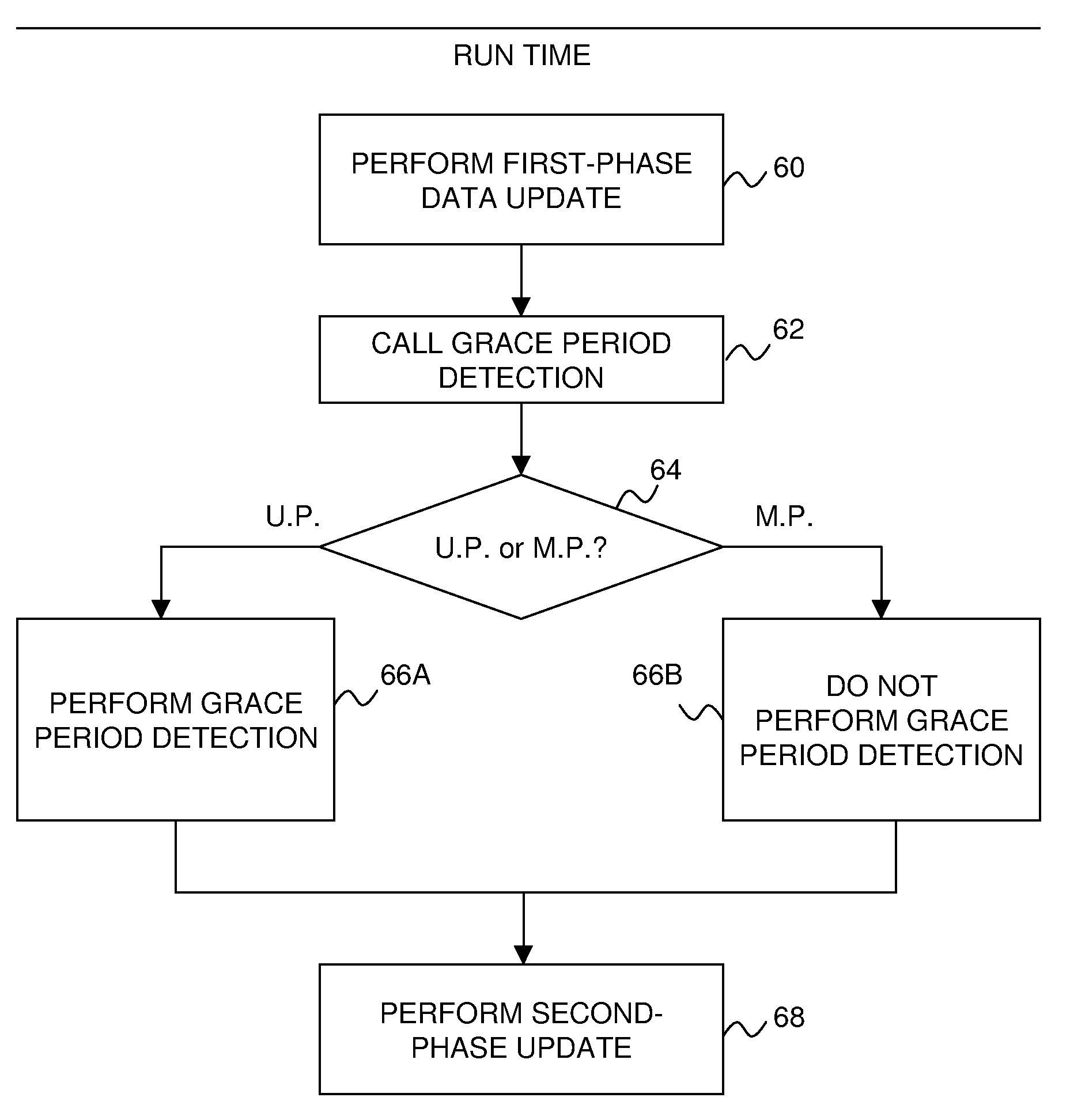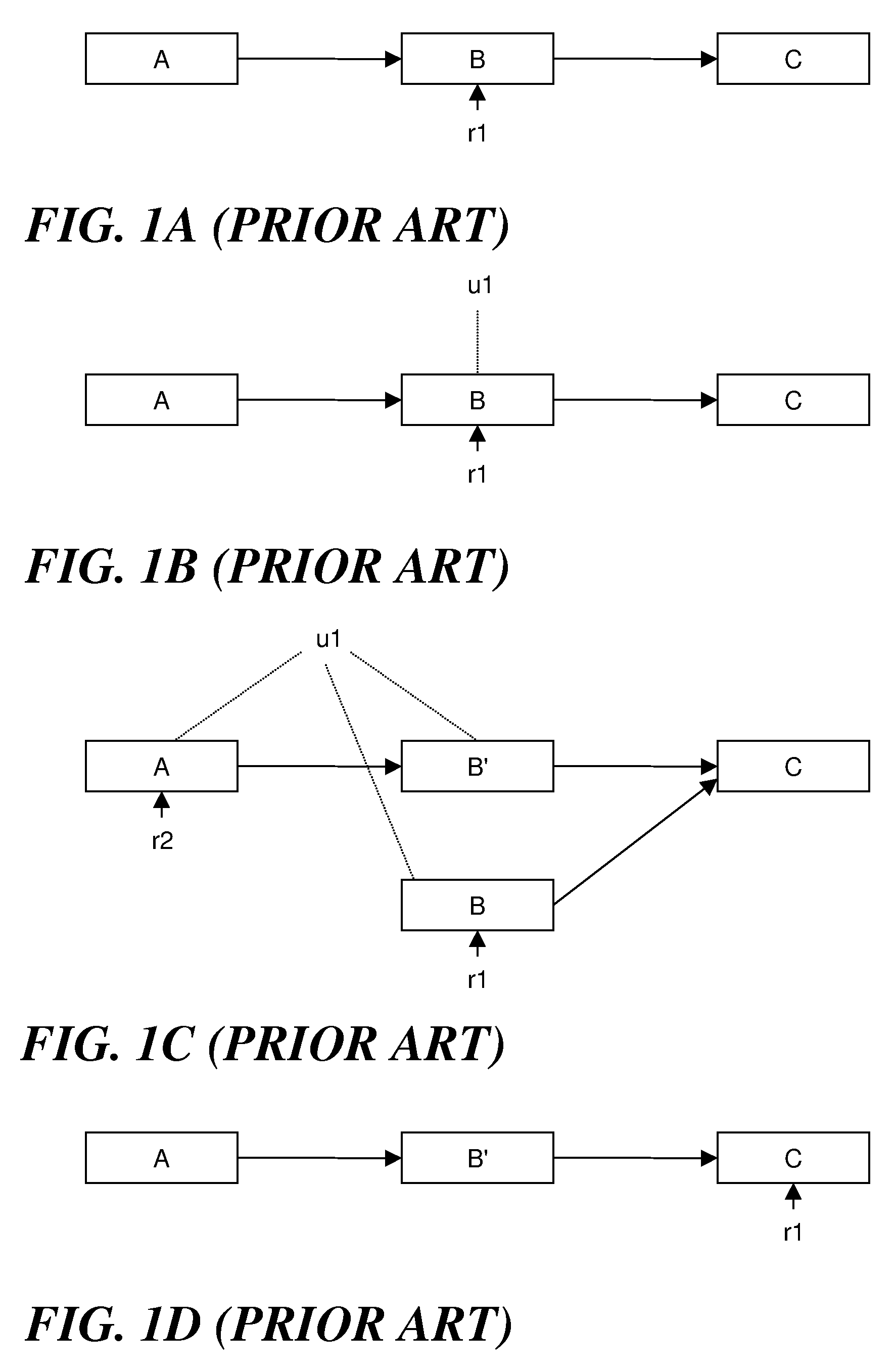Eliminating synchronous grace period detection for non-preemptible read-copy update on uniprocessor systems
a technology applied in the computer field, can solve the problems of non-preemptible read-copy update implementations, read-side lock acquisition would be quite burdensome, etc., and achieve the effect of avoiding the use of grace period detection methods in some implementations of non-preemptible rcu, and avoiding the use of synchronous grace period detection
- Summary
- Abstract
- Description
- Claims
- Application Information
AI Technical Summary
Benefits of technology
Problems solved by technology
Method used
Image
Examples
Embodiment Construction
[0026]Turning now to the figures, wherein like reference numerals represent like elements in all of the several views, FIG. 4 illustrates an example computing environment in which the disclosed technique may be implemented. In particular, a uniprocessor computing system 2 is shown in which a processor 4 is connected by way of a system bus 6 to a memory 8. A conventional cache memory 10 and a cache controller 12 are associated with the processor 4. A conventional memory controller 14 is associated with the memory 8.
[0027]Update operations executed within kernel-level or user-level processes, threads or other execution contexts periodically perform updates on a set of shared data 16 stored in the memory 8. Reference numerals 181, 182 . . . 18n illustrate individual update operations (updaters) that may periodically execute on the processor 4. As described by way of background above, the updates performed by the data updaters 181, 182 . . . 18n can include modifying elements of a linke...
PUM
 Login to View More
Login to View More Abstract
Description
Claims
Application Information
 Login to View More
Login to View More - R&D
- Intellectual Property
- Life Sciences
- Materials
- Tech Scout
- Unparalleled Data Quality
- Higher Quality Content
- 60% Fewer Hallucinations
Browse by: Latest US Patents, China's latest patents, Technical Efficacy Thesaurus, Application Domain, Technology Topic, Popular Technical Reports.
© 2025 PatSnap. All rights reserved.Legal|Privacy policy|Modern Slavery Act Transparency Statement|Sitemap|About US| Contact US: help@patsnap.com



